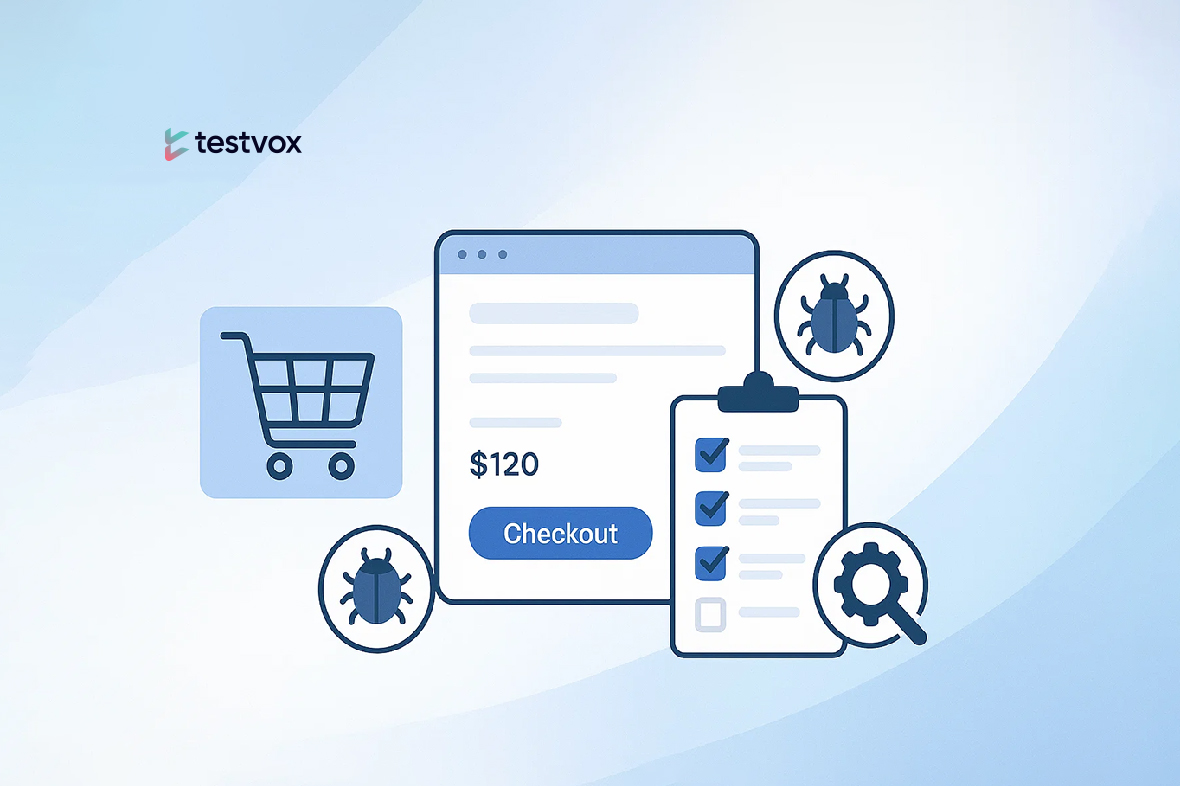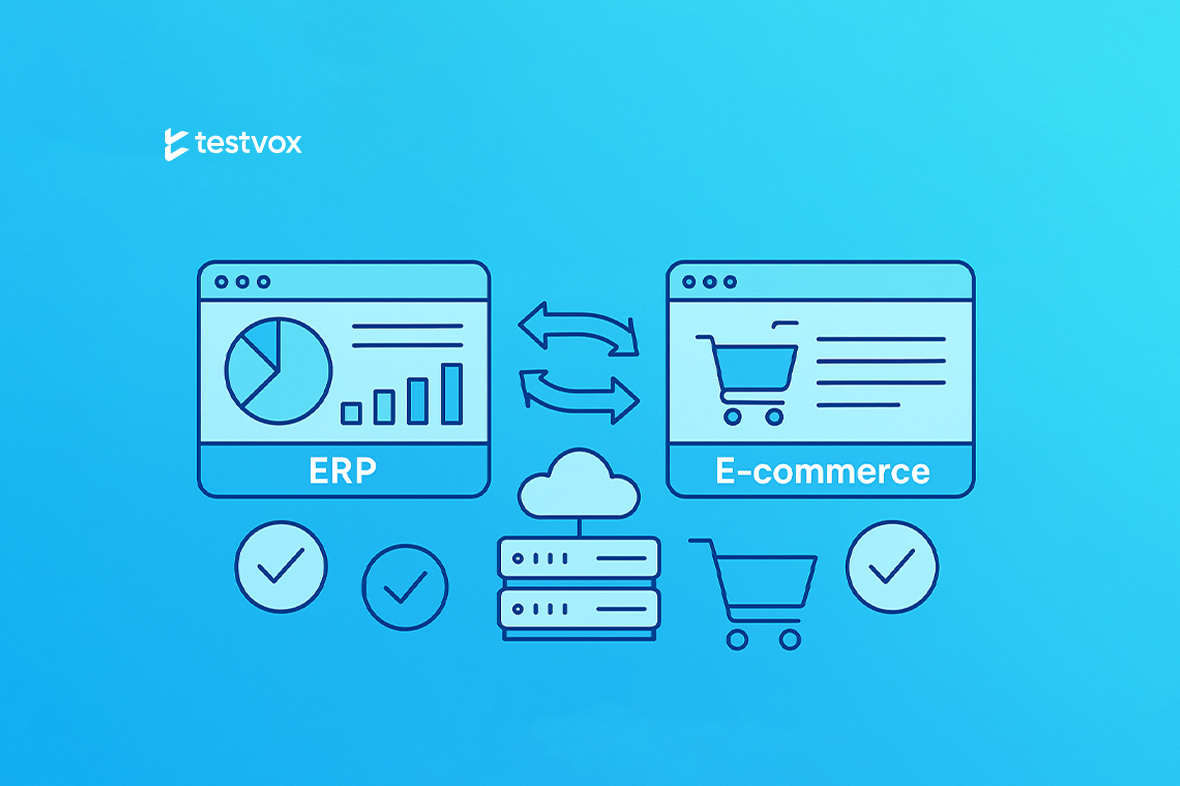 5 October 2025
5 October 2025

Ecommerce Order Management System – Commerce Layer Testing Guidelines
 17 October 2025
17 October 2025
 15:55 MIN Read time
15:55 MIN Read time
A sophisticated headless e-commerce platform built on APIs, Commerce Layer is intended to function as a complete order management system. It gives companies the ability to easily include commerce features into a variety of digital touchpoints, including websites, mobile apps, chatbots, and new IoT devices. The Commerce Layer provides an adaptable backend system that effectively manages inventories, orders, payments, and items by separating commerce logic from content management. This subsection enables developers to design adaptable, scalable, and highly responsive e-commerce systems that provide consistent purchasing experiences across all media, while content teams can focus on managing digital experiences using their preferred CMS.
Why Conduct Commerce Layer Testing?
Order management and transactional workflows in prominent e-commerce platforms are built on top of the Commerce Layer, an API-driven platform. Testing is necessary to ensure that the platform accurately manages inventory, securely takes payments, processes orders consistently, and maintains data integration across all connected channels. QA engineers are required to confirm integration points, error handling, load performance, and compliance with business standards in addition to functional features. Because multi-channel commerce is so complex, thorough testing helps prevent costly errors like inconsistent customer experiences, overselling inventory, order inconsistencies, and payment issues.
Key Characteristics of Commerce Layer
A versatile and developer-friendly method for modern e-commerce is provided by Commerce Layer. It is perfect for companies wishing to scale and personalize their digital commerce experience because of its architecture and design concepts.
Headless Commerce:
The Commerce Layer divides the front-end presentation layer from the back-end commerce logic, in contrast to conventional monolithic platforms. Businesses may create distinctive customer experiences while preserving robust backend performance thanks to this agnostic framework.
API-First Design:
At its core, Commerce Layer is built entirely around APIs, enabling easy integration with any existing or new front-end application. Teams may now connect commerce functionalities across several touchpoints without relying on a single framework because of this.
💡Case Studies: Seamless User Experience for an Eyewear eCommerce Platform
Order Management System (OMS):
According to placing orders to payment, pricing, promotions, shipment tracking, and inventory upgrades, the Commerce Layer offers end-to-end tools to handle the complete order lifecycle. Every order transaction is accurate and transparent because to its OMS features.
Multi-Channel Capabilities:
In order to provide a consistent buying experience across all platforms, businesses can expand their e-commerce beyond websites by connecting Commerce Layer with gadgets, mobile apps, customer support systems, and Internet of Things devices.
Scalability & Efficiency:
For expanding companies, its microservices-based, headless architecture guarantees quicker deployment, effective scaling, and flexibility. This makes it simpler to manage traffic surges, open more locations, or enter new markets with minimal effort.
Why Testing is Critical for Commerce Layer Implementations
For all Commerce Layer integrations to operate effectively and reliably, testing is necessary. Even minor errors can affect operations and customer trust because the platform integrates several systems, including inventory and payment systems.
Customer Experience:
Throughout browsing and adding products to the cart to checkout and order confirmation, testing ensures an intuitive and error-free shopping experience. A thoroughly tested system increases dependability, lowers annoyance, and optimizes client retention and satisfaction.
Revenue Protection:
Revenue losses and cart abandonment might result directly from errors in inventory updates, payment processing, or checkout flow. Testing ensures smooth transactions and defends total revenue by assisting in the early detection and resolution of these issues.
Data Accuracy:
The completion of orders depends on precise product descriptions, pricing, and inventory information. By verifying data consistency across databases, user interfaces, and APIs, testing helps reduce inconsistencies and consumer complaints about inaccurate information.
Seamless Integrations:
For payments, promotions, and product integration, the Commerce Layer significantly depends on interfaces with external systems. By ensuring that all APIs and data flows function properly, integration testing helps to prevent interruptions in order confirmations, pricing rules, and inventory changes.
💡Case Studies: E-commerce Testing for Baby & Maternity Products Platform in Qatar
Key Areas to Test in Commerce Layer
The following essential Commerce Layer Order Management System (OMS) modules require thorough validation in order to guarantee correctness, dependability, and a flawless client experience, according to real-world testing experience.
Orders Module: Test order creation, order-level validations, including payment and delivery status updates, cancellation’s, returns, and status transitions (draft, pending, authorised, and cancelled). Verify the processes from the cart to the finished order.
Inventory Module: To ensure precise availability, confirm stock reservations, real-time inventory updates across warehouses or locations, and overselling prevention measures.
Product Pricing: Verify that list pricing, sales prices, and promotions are applied correctly to SKUs. Keep an eye on pricing regulations and updates across markets and channels.
Checkout & Cart: To ensure pricing accuracy and an uninterrupted purchasing procedure, test pricing policies, discounts, promotions, gift card applications, and the conversion of carts to orders.
Payments Module: Verify authorisation for payments, capture, provide full and partial refunds, and integrate with payment gateways like MyFatoorah with ease. Make sure that payments that are denied or failed are handled correctly.
Shipments & Fulfilment: Evaluate carrier integrations, shipping rate computations, label creation, split shipment management, and provide your customers with real-time delivery status updates.
Promotions & Discounts: Verify that sale prices, coupons, and promotions apply accurately to pertinent SKUs under specified circumstances and without causing conflicts.
Customer Data & Accounts: Confirm that user profiles, wishlist SKU lists, and personal information are managed and secured consistently across transactions.
Best Practices for OMS Testing in Commerce Layer
Reliable order processing across all sales channels, efficient integrations, and data quality are guaranteed by thorough testing of the Commerce Layer’s Order Management System (OMS). QA teams may preserve consistency and stability across the commerce ecosystem by implementing the following best practices.
Test Data Synchronisation
To prevent inconsistencies, confirm that data from the Commerce Layer OMS and the e-commerce platform syncs instantly across all channels.
Test Integrations
Ensure smooth integration with external systems such as ERP (Axanta) and payment gateways (Myfatoorah) for uninterrupted workflows.
Validate Order Management
To ensure correct processing and keep track of modifications, simulate different order scenarios, such as promotions, discounts, and cancellations.
Verify Inventory Management
Verify that warehouses and distribution facilities are accurately tracking and updating stock levels.
Inventory Reservation
Ensure inventory is properly reserved upon order placement to prevent overselling or stock mismatches.
Test Fulfilment Processes
Validate the accuracy of picking, packing, and shipping workflows to ensure timely and error-free delivery.
Returns Management
Test the system’s ability to handle returns, replacements, and refunds efficiently, maintaining customer satisfaction.
Test Cases in OMS Testing for Commerce Layer
|
Test Case ID |
Test Scenario |
Steps to Reproduce |
Expected Result |
| TC_01 | Create an order with multiple SKUs and validate status transitions | 1. Add multiple products to the cart.
2. Proceed to checkout. 3. Complete payment. 4. Fetch order status. |
The order should be created with correct line items and totals. Status should flow from draft to confirmed, and inventory reserved correctly. |
| TC_02 | Validate stock reservation upon order placement | 1. Place an order for a product (Qty:3).
2. Check inventory before and after placement. |
Inventory should be reduced by the reserved quantity. If the order is canceled, inventory should be restored correctly. |
| TC_03 | Place an order when inventory = 0 | 1. Add an out-of-stock product to the cart.
2. Attempt checkout. |
An error should be displayed indicating insufficient stock. No order should be created, and inventory remains unchanged. |
| TC_04 | Apply discount code and verify total | 1. Add product to cart.
2. Apply discount/promo code. 3. Complete checkout. |
Discount should be applied correctly, totals updated, and promotion recorded in the order details. |
| TC_05 | Create a partial shipment and validate inventory | 1. Ship part of the order (Qty: 3).
2. Verify inventory update. 3. Ship remaining quantity. |
Inventory should be decremented correctly per shipment. Order status updates from partially_shipped to shipped. |
| TC_06 | Cancel order before shipment | 1. Place an order.
2. Cancel before shipment. 3. Verify payment and inventory. |
Order status should update to cancelled. Refund initiated and inventory restored. |
| TC_07 | Cancel order after shipment (returns) | 1. Initiate return request.
2. Receive returned items. 3. Process refund. |
Return should be recorded, inventory restocked, refund issued, and order history updated. |
| TC_08 | Retry payment failure without duplicates | 1. Attempt a payment failure.
2. Retry payment. |
Only one order exists. Payment succeeds on retry. No duplicate orders created. |
| TC_09 | Validate webhook for “order placed” event | 1. Place an order.
2. Capture webhook payload. 3. Simulate retry on 5xx error. |
Payload delivered correctly. Retries performed on failure and events logged properly. |
| TC_10 | Verify order API response | 1. Call GET /orders/{id} API.
2. Review response data. |
API response includes all fields, line items, totals, and matches expected schema. |
| TC_11 | Update customer address after order | 1. Place order.
2. Update shipping address. 3. Trigger shipment. |
Shipment reflects updated address. Shipping cost recalculated if applicable. |
| TC_12 | Validate multiple promotions stacking | 1. Apply Promotion A.
2. Apply Promotion B. 3. Remove A and reapply B. |
Stacking rules applied correctly. Totals accurate. Applied promotions logged properly. |
| TC_13 | Validate ERP inventory sync | 1. Update stock in ERP (Axanta).
2. Run sync. 3. Verify inventory in Commerce Layer. |
Inventory in Commerce Layer matches ERP. Conflicts resolved as per sync rules. |
| TC_14 | Confirm refund via payment gateway | 1. Trigger refund request.
2. Verify gateway (Myfatoorah) response. 3. Check refund status. |
Refund logged, status updated, and customer notified. |
| TC_15 | Verify sales price updates in PDP | 1. Add sale price for a SKU.
2. Verify on product details page (PDP). |
Sale price displayed correctly on the product details page. |
| TC_16 | Verify customer wishlist SKU lists | 1. Log in as customer.
2. Add/remove products from wishlist. 3. View updated wishlist. |
Wishlist updates correctly, reflecting all added or removed SKUs in real-time. |
💡Case Studies: B2B E-commerce Application Testing
Common Bugs in OMS Testing
QA professionals often come across recurring issues when testing the Order Management System (OMS) at the Commerce Layer, which can affect backend operations, order accuracy, and customer experience. Among the most prevalent bugs are;
1. Orders stuck in “In Progress”
Orders remain in the In Progress status even after being marked as delivered, causing confusion in reporting and fulfilment tracking.
2. Duplicate orders during payment retries
Retrying failed payments sometimes creates duplicate orders, leading to inventory and financial discrepancies.
3. Inventory not rolled back after order cancellation
Cancelled orders do not restore the reserved inventory, potentially blocking stock availability for other customers.
4. Partial shipments are not updating the order status
When orders are partially shipped, the order status may not update correctly, affecting shipment tracking.
5. Discount codes are applying incorrectly
Issues like stacked discounts or expired promo codes being applied incorrectly can lead to incorrect totals and customer dissatisfaction.
6. Refunds processed but not reflected
Refunds are processed successfully in the gateway, but are not updated in the order history.
7. Refund notes not updated
Notes or remarks associated with refunds are missing or not recorded correctly.
8. Wishlist SKU list updates are not syncing
Customer wishlist changes (adding/removing SKUs) do not reflect properly across the platform.
Providing reliable and efficient e-commerce experiences requires thorough testing of the Commerce Layer Order Management System. Because of its headless, API-first architecture, which supports intricate order lifecycles across numerous channels, it is essential to thoroughly validate every OMS module, from order creation and inventory management to payment processing and fulfilment, in order to avoid expensive mistakes and business interruptions. Data correctness, income protection, and customer happiness are all increased by adhering to best practices like real-time synchronisation checks, integration validation, thorough order workflow testing, and ongoing monitoring of prominent issues.
Collaboration between the IT, development, and QA teams, along with a well-defined testing plan and committed resources, facilitates efficient go-lives and continuous system scalability by revealing hidden problems early. A strong OMS testing strategy combined with the Commerce Layer becomes a strategic advantage to satisfy changing market demands and provide exceptional multichannel shopping experiences as headless and composable shopping continue shaping the future of e-commerce.
 BY
SHALET ABRAHAM
BY
SHALET ABRAHAM






